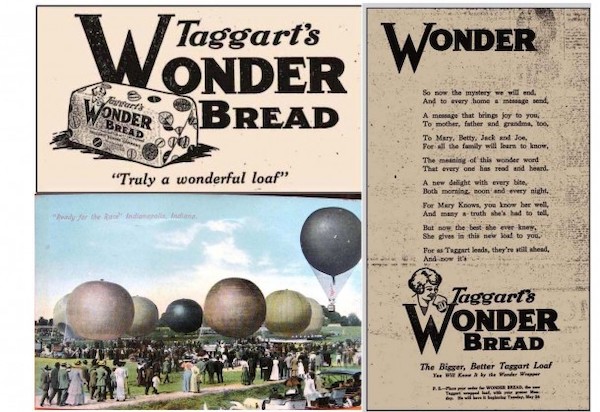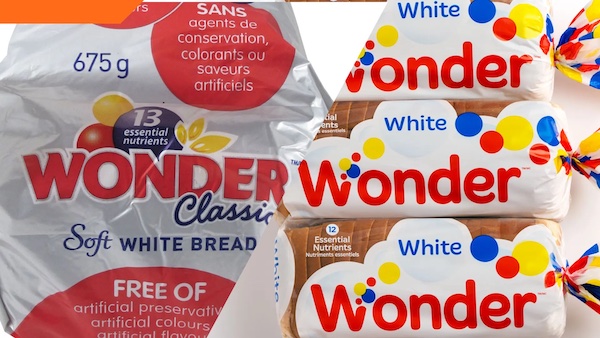An interesting story about “Wonder Bread” was on CNBC a while back that talked about how the brand has survived the precipitous decline in white bread popularity. According to the article, in the first half of the 20th century, white bread accounted for as much as 30% of the American diet. But since around 2006, more US households are regularly eating wheat bread than white and the preference has only continued to increase. While Wonder Bread has certainly not been immune to the shift in consumer tastes – it narrowly escaped complete extinction in 2012 – the brand still does a sizable business, with Wonder Bread’s 2022 sales totaling $484 million.
Owned by Flower Foods since 2013, one key to Wonder Bread’s endurance is arguably its expansion beyond the fluffy, white flour sandwich bread that made it famous. In 2006, Wonder was one of the first bread brands to introduce whole grain white breads in an effort to appeal to consumers who loved the taste of white bread, but were looking for more nutrition. Ultimately, the decline in white bread sales wasn’t stopped, although the CNBC article notes that Wonder Bread has actually gained a moderate amount of market share versus pre-pandemic. Still, it’s business is a fraction of what it once was. In 1984, around 800 million loaves of Wonder Bread were sold. From January to mid-August 2023, approximately 55 million loaves were sold, according to CNBC. The full article, “How Wonder Bread has survived competition and the fall of white bread” is HERE. I’ve included some other interesting facts about Wonder Bread below.
- Wonder Bread was first conceived by the Taggart Baking Company of Indianapolis, Indiana, in 1921. Legend has it that Wonder Bread outsold all other brands during the first week of its sales. While Wonder Bread was not the first commercially produced, soft white bread, it was among the first breads sold in plastic wrappers in the 1920s.
- Name and distinct logo were conceived by Elmer Cline, deputy manager of merchandising development at Taggart. Cline had attended a hot-air balloon race at the Indianapolis Speedway, and seeing those colorful balloons overhead, he was awestruck by the “wonder,” as Wonder Bread puts it on its website. Having settled on Wonder Bread, Taggart hired Drew Miller, a Chicago commercial artist, to design the logo. Against a white background, Miller added red, blue, and yellow circles, some overlapping, to represent balloons. The logo and packaging have been reconfigured only slightly over the 100+ years since.
- Capitalized on technology as well as the growing popularity of white bread. Bakers before the early 1900s tended to use whole wheat flour as white flour was labor-intensive to produce and therefore more expensive. But once industrial processes eliminated the labor costs, it went from the most expensive to among the cheapest kinds of flour. Bakers could also market their white flour breads as “pure” and “clean,” at a time when consumers were beginning to recognize the dangers of food-borne illnesses.
- Became a national brand when the Taggart Baking Company was purchased by Continental Baking Company. In 1930, Continental began marketing Wonder Bread in sliced form nationwide, one of the first companies to do so.
- Loaves were sold unsliced during World War II because the US government literally banned sliced bread! The rational was that the wax paper used for preserving sliced bread and the steel used in slicing machines was needed for military use. They also thought that if people couldn’t get their bread pre-sliced anymore like they had grown accustomed to, they wouldn’t buy as much bread. In turn, the demand for wheat would go down, which would decrease the price and give the military access to a lot more flour. After failing to save as promised, the ban, which went into effect on January 18, 1943, was rescinded less than two months later on March 8, 1943.
- Wasn’t always enriched. During World War II, Continental Baking began adding vitamins and minerals to Wonder Bread as part of a government-sponsored program of enriching white bread to combat certain diseases. The addition of B vitamins and iron to white flour eliminated the diseases beriberi and pellagra. The initial enrichment of white flour called for niacin, thiamin, riboflavin and iron. In the 1990’s folic acid was added in order to prevent the risk of coronary heart disease and birth defects such as spina bifida.
- Advertising helped make Wonder Bread popular. Wonder Bread was one of the first products to be promoted on the radio in the 1920s. It also sponsored the first regular color television show, The Howdy Doody Show (see entry under 1940s—TV and Radio in volume 3) in the 1940s. With catchy tunes, popular characters, and ad campaigns such as “Helps build strong bodies 8 ways” (later “12 ways”), Wonder Bread became a favorite food of children.
- Has changed hands numerous times. Continental Bakery was sold to ITT (International Telegraph and Telephone) in 1968 when that company was looking to diversify. By 1984, ITT was ready to close out on the baking business and sold to Ralston Purina. Next, the baking company was acquired by Interstate Bakeries Corporation in 1995. The combined companies were rebranded Hostess Brands in 2009. That did not last long either, with Hostess Brands filing for bankruptcy in November 2012. Flowers Foods, owner of the Mrs. Freshley’s, Tastykake and Dave’s Killer Bread brands, announced that it signed an agreement to acquire Hostess’ bread brands, including Wonder Bread, on January 11, 2013. During the transition from approximately November 16, 2012, until September 23, 2013, Wonder Bread disappeared from store shelves. (Sources: CNBC, Tasting Table, Bakerpedia, Wonder Bread)










